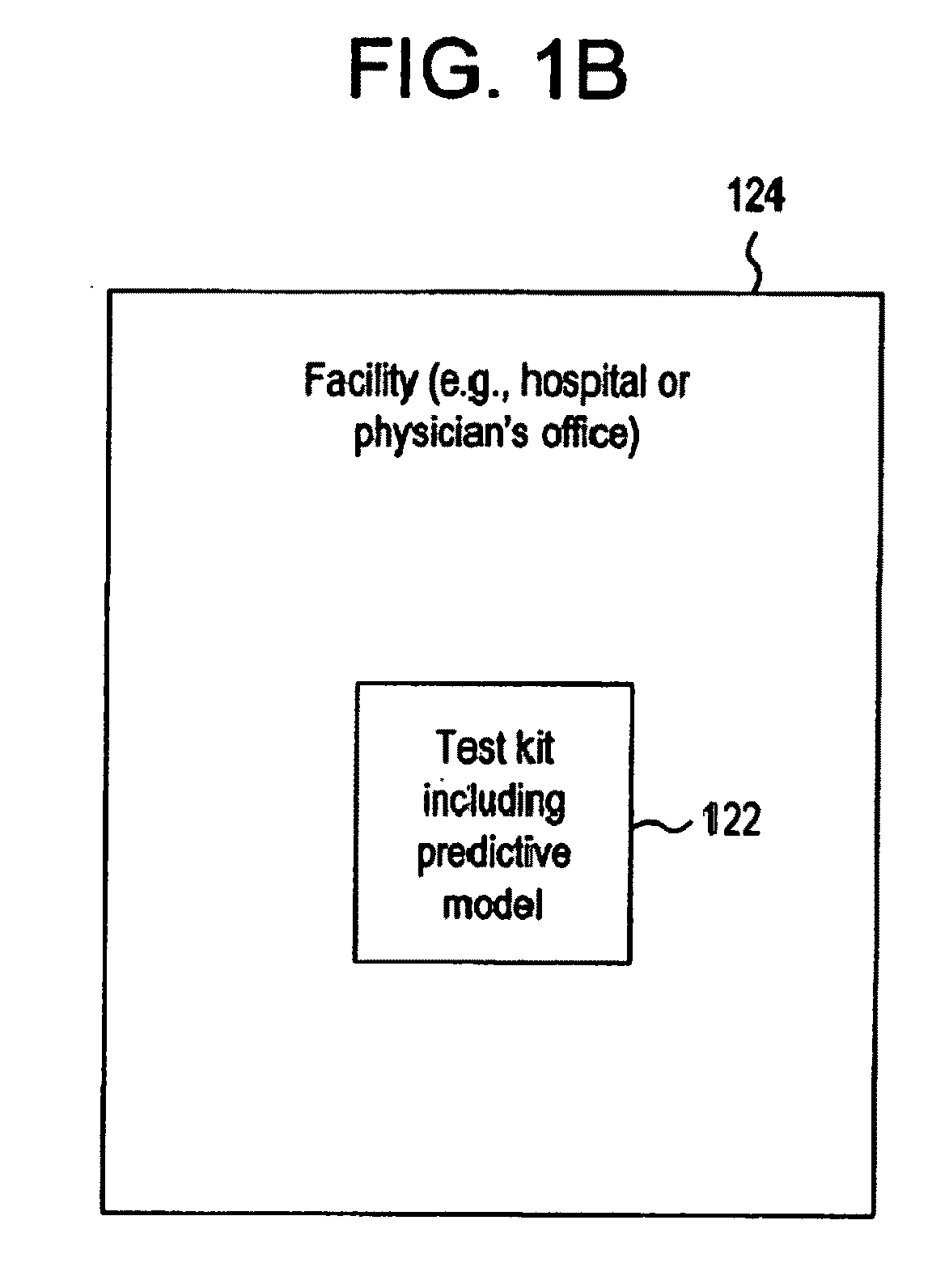Systems and methods for predicting disease progression in patients treated with radiotherapy
a technology of radiotherapy and disease progression, applied in the field of systems and methods for predicting disease progression in patients treated with radiotherapy, can solve the problems of conflicting interpretations, confusing patients and physicians, and inappropriate therapy
- Summary
- Abstract
- Description
- Claims
- Application Information
AI Technical Summary
Benefits of technology
Problems solved by technology
Method used
Image
Examples
examples
Predicting Disease Progression Post-Radiotherapy
[0082]Two new models were developed in accordance with embodiments of the present invention. As described in greater detail below, model 1 contained the biopsy Gleason score (BGS), PSA and two H&E morphometric features with a predictive accuracy concordance index (CI) of 0.86, sensitivity 0.83 and specificity 0.88. Model 2 was developed without clinical variables and contained one morphometric feature and one molecular immunofluorescence (IF) feature, i.e., the relative area of Ki67 positive tumor epithelial nuclei. Model 2 performed with a CI 0.82, sensitivity 0.75 and specificity 0.84. In addition, a prior pretreatment biopsy model (described in above-incorporated, commonly-owned U.S. Pub. No. 20100184093 in connection with FIG. 11 previously generated to predict disease progression in, for example, disease progression in patients treated with radical prostatectomy and followed for a median of 8 years) performed with a CI 0.79, sensi...
PUM
 Login to View More
Login to View More Abstract
Description
Claims
Application Information
 Login to View More
Login to View More - R&D
- Intellectual Property
- Life Sciences
- Materials
- Tech Scout
- Unparalleled Data Quality
- Higher Quality Content
- 60% Fewer Hallucinations
Browse by: Latest US Patents, China's latest patents, Technical Efficacy Thesaurus, Application Domain, Technology Topic, Popular Technical Reports.
© 2025 PatSnap. All rights reserved.Legal|Privacy policy|Modern Slavery Act Transparency Statement|Sitemap|About US| Contact US: help@patsnap.com



